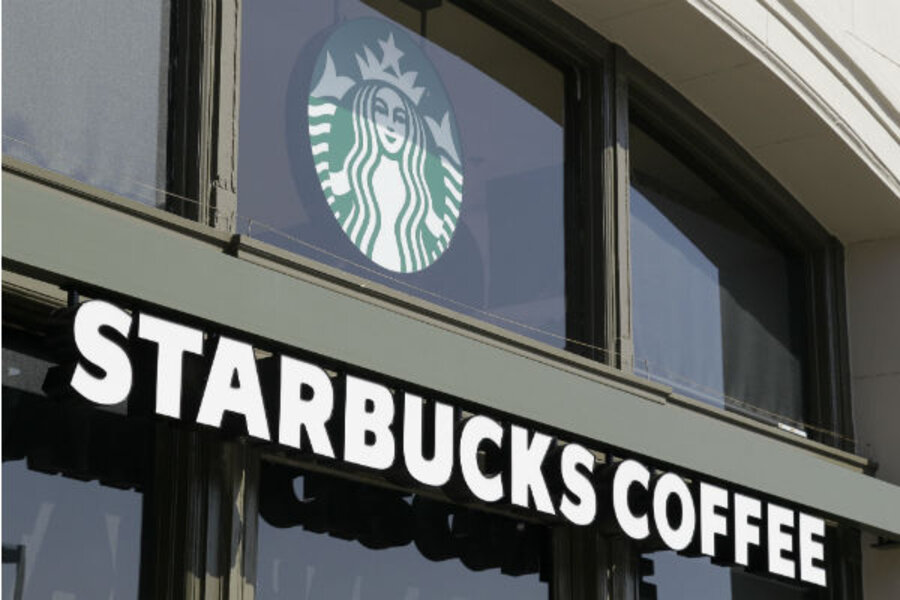Why moms won't give up fast food
Loading...
My Facebook feed was slammed with three separate posts from friends in a span of just a few hours proclaiming the same news – "The new Starbucks has a DRIVE-THRU!"
I already knew. I had heard about it three hours earlier after running into two girlfriends who told me. I did a happy dance.
I know it's wrong to get so excited about coffee, particularly fast-food coffee.
Yes, as much as we don't want to admit it, Starbucks is as fast a food choice as McDonald's, Wendy's, and Burger King.
Somewhere along the dusty highway of life, Starbucks slowly extended its famous "third-space" ambience and decent lattes from its cafes into the cup holder in my car.
Many other fast-food chains, which have mastered the art of greasy cuisine on the go, are now updating their storefronts and menus to include more fresh ingredients and customizable products to be just like – you guessed it – Starbucks. I walked into a Wendy's a few months ago and there was a fireplace and a pastry counter. It's not that I will start sitting in Wendy's with a crossword and scone any time soon, but I appreciate the effort.
Starbucks somehow, with its complex drink ordering system, and fancy paper envelopes for its nuclear-oven-heated breakfast sandwiches, makes me feel like I am not eating fast food.
And when I can get that feeling while avoiding pulling a fussy one-year-old from his astronaut-tested booster seat strapped in the back seat of the car, I feel good.
I can guarantee that when Starbucks started building drive-thrus – now in about 40 percent of Starbucks' US stores – suburban moms started drinking more Starbucks.
Just as I am sure that most suburban moms also started eating more fast food when they started driving around more people than just themselves. I have heard the shameful confessions of mom friends who admit to feeding their kids fast food on the way home from soccer practice.
My own drive-thru usage seemed to mushroom after becoming a mom, mostly to include Dunkin’ Donuts – the coffee establishment that currently has a drive-thru near me – and a few McDonald's along the way. The proof of this personal trend can be found in the glove box, stuffed with extra napkins.
To justify this increase, I like to think of myself as a mobile member of the "Downton Abbey" brood, and instead of Mr. Carson delivering my tea to the parlor, he is simply reaching through a window and handing it to me. See, I'm no more spoiled than a member of the British aristocracy of the early 20th century.
And spoiled we are, indeed. The service to get our fast food takes only a matter of seconds. A 2013 study published in QSR (Quick Service Restaurant) magazine reports that the average time of service at the McDonald's drive-thru was 189.49 seconds (just more than three minutes). Other fast-food competitors involved in the study were slightly slower, averaging service times closer to around three-and-a-half minutes.
Those food preparation and delivery times are at least 15 minutes shorter than the time it would take me to run inside any food establishment with a toddler. If we are out, it takes at least 20 minutes for me to unload, order, pick up the food, and re-load the little astronaut back into the spaceship.
It can be enough of a hassle to turn even the biggest health nut toward chicken nuggets.
I can hear the critics now, pointing out that eating at home would be even more immediate than eating at a drive-thru, and I totally agree.
I would invite those critics to join me for a trip to go grocery shopping, pick up dry cleaning, and stop at the shoe-repair shop. Not to show them in some self-justified way just how hard it is to get out of the car with a toddler, but instead to let them stay in the car with my son while I run my errands. Then we can go home and I will gladly make them a peanut butter and jelly on sprouted wheat with a side of undressed carrot sticks.
According to another 2013 article in QSR magazine about big brand stories for 2013, drive-thru windows are becoming a top priority for Starbucks:
"Earlier in the year, Starbucks announced its goal to build a drive-thru window into 60 percent of its system in the next five years," the magazine reported. "This strategy, combined with Starbucks’s efforts to improve its food offerings, means other quick serves may start losing even more share to the 800-pound gorilla in the category that Starbucks has become."
That 800-pound gorilla is making me and other moms do a happy dance.








